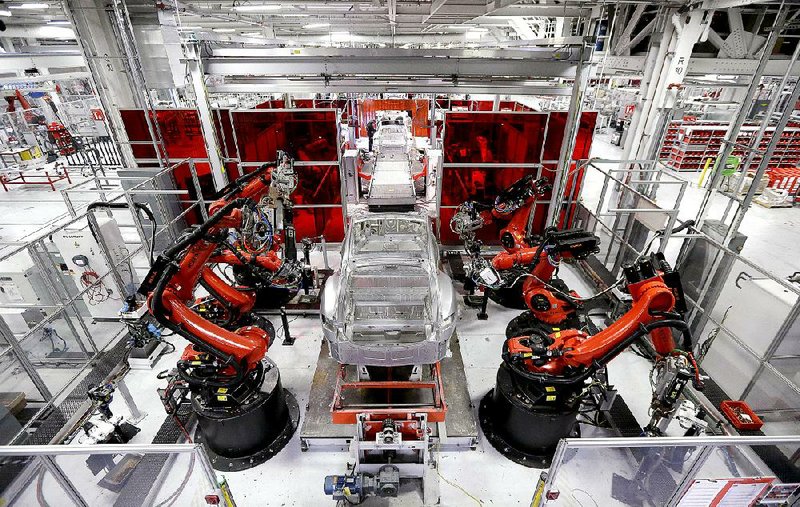WASHINGTON -- U.S. consumers held back from spending more in April, instead channeling income gains into savings.
Consumer spending was flat in April -- the weakest performance in three months -- after a revised 0.5 percent increase in March, the Commerce Department reported Monday. The March advance had been the biggest gain since August. Personal income rose a healthy 0.4 percent.
"Consumer spending remains a bit restrained," said Russell Price, a senior economist at Ameriprise Financial Inc. in Detroit. "It suggests a weak start to the quarter and puts growth estimates at risk. I still think things will improve. We're going to gain some momentum. All the fundamentals are in place for it."
The spending report was one of three economic reports released Monday. Manufacturing growth rose in May for the first time in six months, driven by more new orders and an increase in hiring, and construction spending rose in April to the highest level in more than six years, fueled by healthy gains in housing, government spending and nonresidential construction.
The unchanged reading for consumer spending in April had been expected given weakness previously reported in retail sales and auto sales for the month. Economists, however, forecast that spending will rebound in coming months. Solid gains in employment and incomes should translate into more confident consumers who are willing to spend more.
With income growing and spending flat, the personal saving rate jumped to 5.6 percent of after-tax incomes -- the second-highest level since December 2012.
Economists believe consumers will start spending the savings they have accumulated from the big drop in gasoline prices. While the cost of filling up the tank has risen a bit in recent weeks, prices are still nearly $1 below the levels of a year ago.
Consumer spending is closely watched because it accounts for 70 percent of economic activity.
"The April income and spending figures are another reminder that even though their incomes are rising at a healthy pace, households are still reluctant to boost spending more freely," said Paul Ashworth, chief U.S. economist at BMO Capital Markets, in a note to clients.
He said he still believed the overall economy would grow between 2.5 percent and 3 percent in the current April-June quarter.
The overall economy shrank in first three month of the year, with the gross domestic product contracting at an annual rate of 0.7 percent.
Consumer spending slowed to growth of just 1.8 percent in the first quarter, down from spending growth of 4.4 percent in the fourth quarter. The cold weather in many parts of the country kept shoppers away from stores. With the arrival of spring and warmer weather, analysts are looking for spending to rebound.
The weakness in April, the first month in the new quarter, reflected big declines in spending on both durable goods such as autos and nondurable goods such as clothing and food. Spending on services, which covers utility bills and rent, edged up 0.2 percent.
Recent employment gains are likely to fuel spending. The economy created 223,000 jobs in April, pushing the unemployment rate down to a nearly seven-year low of 5.4 percent.
The Federal Reserve has kept a key interest rate at a record low near zero since December 2008 in an effort to combat high unemployment. Even though the job market has revived, the Fed has left rates alone in part because inflation for nearly three years has been running below the Fed's 2 percent target.
Many economists believe the central bank, which next meets June 16, will delay its first rate increase until September.
The Institute for Supply Management, a trade group of purchasing managers, said Monday that its manufacturing index rose to 52.8 last month from 51.5 in April. That's the highest reading since February. Any reading above 50 signals expansion.
The pickup in factory activity suggests the economy may be growing again after shrinking in the first three months of the year.
A measure of new orders rose to the highest level since December and order backlogs also jumped, the Institute for Supply Management said. A gauge of production fell but remained above 50. The increase in orders points to greater production in the months ahead.
Construction spending advanced 2.2 percent in April to a seasonally adjusted annual rate of $1 trillion, the highest level since November 2008, the Commerce Department said Monday. Spending had risen a more modest 0.5 percent in March.
The gain included a 0.6 percent rise in residential construction and a 3.1 percent jump in nonresidential activity such as office buildings, hotels and shopping centers. Government projects increased 3.3 percent, reflecting the biggest jump in spending on state and local projects in three years.
Economists are looking for construction to provide solid support to the economy this year.
Information for this article was contributed by Martin Crutsinger and Christopher S. Rugaber of The Associated Press and Shobhana Chandra of Bloomberg News.
Business on 06/02/2015
